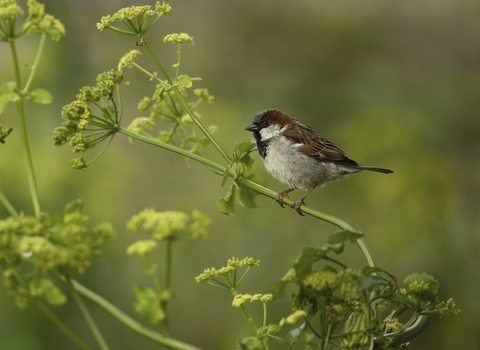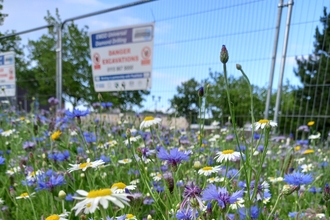You might have heard lots of talk about the Planning and Infrastructure Bill (PIB). But what is it, how does it work and why are we so concerned?
What is a Bill?
Bills are proposed new laws, which are debated and voted on by Parliament. Once they have been approved by MPs in the House of Commons and peers in the House of Lords, they go onto receive Royal Assent (approved by the King) and become an Act.
Bills can be changed, added to, or have sections removed through amendments. These will be put forward by MPs and Peers. In order to make it into the Bill they need to be voted on.
What is the Planning and Infrastructure Bill designed to do?
The Bill aims to help development, like housebuilding, happen faster.
Why are The Wildlife Trusts concerned about the Planning and Infrastructure Bill?
At the moment, developers need to assess and address the environmental impacts of developments on legally protected habitats and wildlife.
Part Three of the Bill would change this process. This would remove the foundations of our nature laws, such as the need to avoid harm to nature first. Environmental organisations, and even the Office for Environmental Protection – the independent watchdog on environmental issues – agree that the Bill weakens the protection of nature.
The idea behind the Bill is not all bad: in some areas a strategic approach is already helping to address the pollution from new developments on important habitats. However, it will not work for all the different ways development can impact on the environment, and without strong safeguards nature will lose out.
What’s the timeline on this Bill?
The PIB was published for the first time in a process called first reading in March 2025. It was then discussed in a debate which every MP could attend and speak at – this is called second reading.
We are now at the end of Committee stage where a smaller group of MPs have examined the Bill line by line and discussed amendments that have been put forward by MPs.
Next, likely in June, will be report stage – where all MPs, once again, can join in a debate about the Bill – as well as any discussions about any more amendments the MPs have put forward.
After report stage, it will go through each of these stages again in the House of Lords. It will then go back and forth between the House of Commons and the House of Lords until there is agreement. At this point it will be up to the King to give Royal Assent, after which is becomes an Act of Parliament – and is law.
If the Bill goes ahead as currently planned, what would be the impact on wildlife?
The true impact of the Bill on wildlife is unlikely to be known for a while. However, it threatens our nationally and globally important wildlife sites - including chalk streams, wildflower meadows and ancient woodlands - and beloved species such as the dormouse.
Don’t we need new houses? Isn’t it good if this Bill is trying to cut red tape to help more houses get built?
We absolutely recognise that there is a housing crisis and that one of the ways to address this is for new homes to be built.
However, like so many members of the public, we think it is important to build homes in a way that helps wildlife. We also know that this is possible, and it helps boost the health and wellbeing of communities.
What do The Wildlife Trusts want the UK Government to do? What would the impact of removing Part Three of the Bill be?
We are now calling on the Government to remove Part Three of the Bill: this is the section that creates the new approach.
By removing Part Three, current environmental laws would remain in place. The current approach may not always be perfect, but it at least means the Bill would maintain existing levels of protection.
The problems with the current approach are often due to practical barriers in implementation – such as having the right information to help inform the decision – rather than because the laws themselves are flawed.
That doesn’t mean we are completely against any changes: but these must improve protection, not weaken it. Removing Part Three from the Planning and Infrastructure Bill would create the time needed to:
-
listen to concerns
-
embed learnings from existing good practice
-
develop a new plan to ensure development and nature recovery can go hand in hand.
Haven’t you been asking for amendments to the Bill: why the change in your approach?
We have done everything possible to work constructively with the Government. However, Ministers have rejected all of these so far. We remain open and willing to support effective amendments to make the Bill better for nature, but now believe that withdrawing Part Three completely is the best way for Ministers to build trust.
I’ve seen some organisations calling for a ‘pause’ to Part Three: what’s the difference?
A pause is a highly unusual parliamentary manoeuvre which would not guarantee that the damaging proposals will be struck out. It is safer and more in line with parliamentary procedures to remove Part Three altogether.
But doesn’t nature still get in the way of much needed new development?
Developers can appeal planning decisions where a local council has refused to allow a development to go ahead, or when the council takes too long to make a decision. Few planning proposals get as far as a planning appeal.
Our research examined 17,433 planning appeal decisions made in 2024. To put this in context, local planning authorities decided 316,100 planning applications in the same year.
Planning appeal decisions often cover a wide range of factors, many of which are not environmental issues but are all vital to ensuring development is of a high quality and supports local communities. Issues can include how many affordable homes are proposed and access to vital services such as hospitals and schools.
Overall, bats and great crested newts were a relevant factor in just a tiny proportion of planning appeal decisions in 2024.




